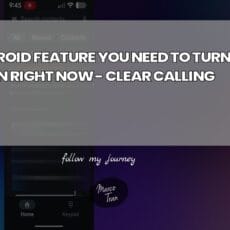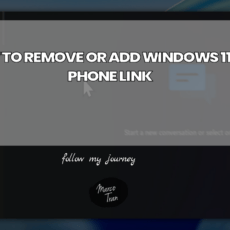Ever wished you could ask ChatGPT a question without dragging in all the baggage of previous conversations? Or test some code, draft sensitive text, or perform quick research without any of it being saved to your chat history? That’s precisely what the Temporary Chat feature is designed for. It creates a clean, one-off space where context is reset and nothing gets added to your long-term chat log, making it ideal for focused tasks and privacy-conscious work.
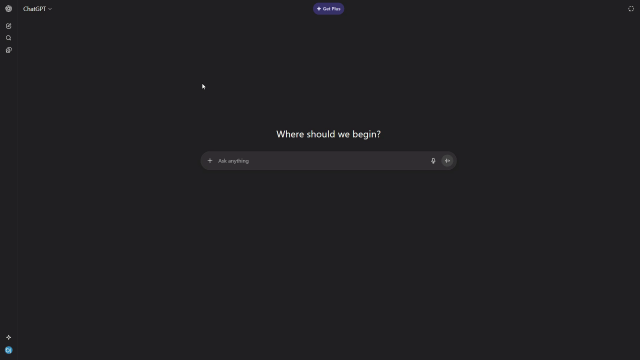
Why Temporary Chat Matters
ChatGPT is great at remembering context within a conversation. That’s one of the reasons it feels so helpful: you don’t have to repeat yourself constantly. But that same strength can become a weakness when you need a completely fresh perspective or when you’re dealing with information you’d rather not keep in your account. If you’ve ever asked a question and gotten an answer that seemed influenced by something you said earlier—perhaps in a different direction than you intended—you’ve seen how context can shape outcomes. Temporary Chat offers a quick way to sidestep that, giving you a clean slate without changing global settings.
In short, Temporary Chat is like a “private workbench”. Use it when you want an isolated interaction, free from the memory of what came before. It doesn’t appear in your history, it won’t update ChatGPT’s Memory, and it isn’t used to train the model. For safety reasons, a copy may be retained for up to 30 days, but it won’t be added to your ongoing archive or affect how ChatGPT responds in other threads.
How ChatGPT Handles Context vs Memory
It’s useful to distinguish between two concepts:
- Conversation context: Within a single chat, ChatGPT “remembers” what’s been said to keep the dialogue coherent. This persistence is local to that chat. If you start a new normal chat, the context from the previous chat isn’t carried over unless you copy it in.
- Memory (feature): ChatGPT can store certain preferences and details over time to personalise future interactions (for example, your tone, recurring projects, or preferred coding languages). Temporary Chat explicitly will not use or update this Memory.
Temporary Chat drops both: it avoids pulling in recent exchanges, and it won’t add any new information to your Memory. This makes it particularly handy for unbiased testing or anything sensitive.
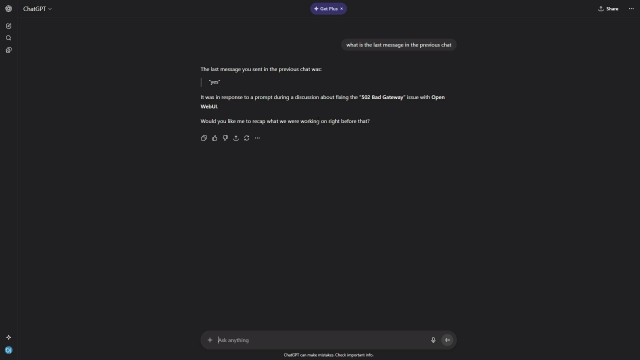
Seeing Memory in Action—and How Temporary Chat Changes It
To appreciate the difference, consider a quick test. In a standard chat, ask: “What is the last message in the previous chat?” If you’ve been discussing an issue recently, ChatGPT will typically reference the content of the current conversation to respond coherently. In many cases, you’ll get a reply grounded in the ongoing chat context, and if you phrase your question around “previous chat” while staying in the same thread, it may recount your last message in that conversation.
However, switch to a Temporary Chat and ask the same thing: “What is the last chat message I typed?” This time, it won’t know what you’re referring to, because Temporary Chat is purpose-built to operate without context carried over from other sessions. You’ll get a response that reflects the lack of history—often clarifying that there isn’t any prior content to reference. This behaviour is intentional and valuable: it ensures you can test prompts, code, or ideas without any unintended influence from previous messages.
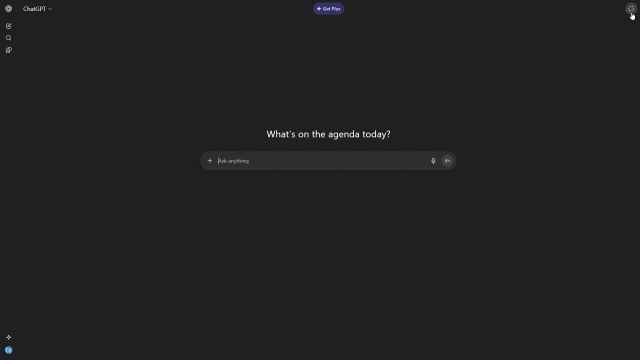
How to Turn On Temporary Chat
Enabling Temporary Chat is straightforward:
- Open ChatGPT and start a new chat.
- Look to the top-right corner of the interface.
- Click “Turn on Temporary Chat”.
Once enabled, you’ll see a brief explanation: the temporary chat won’t appear in your history; it won’t use or update Memory; and it won’t be used to train models. For safety purposes, a copy may be retained for up to 30 days (e.g., for abuse monitoring) before it’s removed. This text is a helpful reminder of how the mode behaves and what it’s designed for.
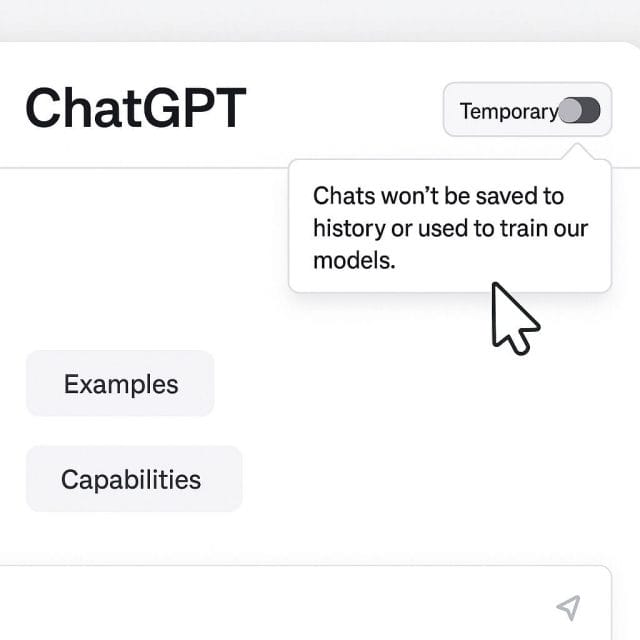
A Quick Demonstration
Let’s walk through the example mentioned above. In a normal chat, you ask ChatGPT: “What is the last message in the previous chat?” Because the thread maintains context, the assistant can recall what you’ve been discussing—say, troubleshooting a bug you typed up earlier. It responds appropriately, leveraging the stored history in the current conversation.
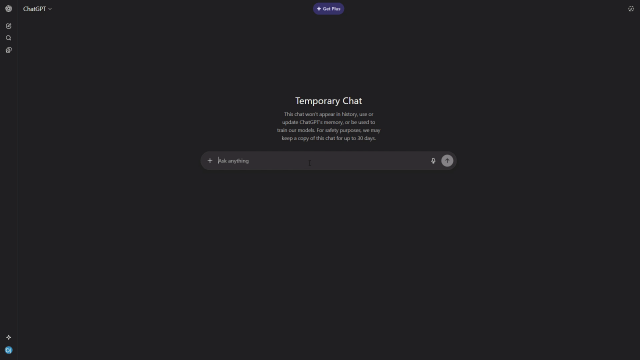
Now flip the switch to Temporary Chat and ask the same question again. You’ll likely see a reply along the lines of: “I don’t have access to previous messages in this context,” or it will simply address the question as if it were your first message. That’s the point: no cross-thread context, no Memory updates, and no addition to your account’s chat history.
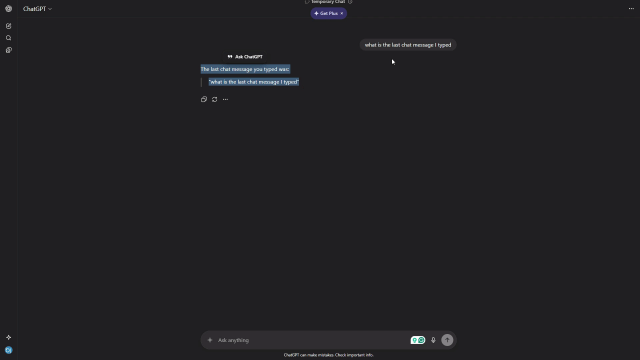
What Temporary Chat Is—and Isn’t
Temporary Chat is designed for ephemeral, focused interactions. It’s perfect when you:
- Need a “clean room” for prompt testing, without past discussions affecting outputs.
- Are working with sensitive details that you don’t want added to your chat history.
- Want to brainstorm ideas that won’t influence future responses via Memory.
- Prefer to isolate coding or research experiments so each session starts from zero.
It isn’t a replacement for permanent project threads or ongoing conversations you’ll want to revisit later. If you need to return to your work another day, consider copying the output to a document or enabling a normal chat where you can build context over time.
Practical Use Cases
1) Coding and Debugging
When you’re debugging a tricky issue, previous prompts can unintentionally push ChatGPT towards an assumption that’s no longer valid. Temporary Chat allows you to present the current state of your code and logs without earlier exchanges biasing the result. You can also use it to experiment with different approaches—each time you toggle Temporary Chat, you know you’re starting fresh, creating a more reliable comparison between techniques.
Tip: Paste only the relevant portions of code and error messages into the temporary session. This keeps things focused and allows the assistant to analyse the problem without noise from unrelated past context.
2) Private or Sensitive Queries
Working with confidential client information, proprietary data, or personal details? Temporary Chat helps keep that interaction out of your saved chat history and prevents it from updating Memory. For many professionals—lawyers, consultants, product managers—this is a simple way to reduce exposure while still getting value from the model.
3) Research Without Accumulated Bias
When researching a topic, you might want to avoid the chain of reasoning built up over previous queries. The Temporary Chat mode lets you test different lines of enquiry independently, which can be particularly useful for fact-checking or comparing perspectives. For example, you could explore two contrasting hypotheses in separate temporary sessions, then review the results side-by-side in your own notes.
4) Clean Prompt Engineering
Prompt engineers and power users can use Temporary Chat to benchmark prompts. By ensuring a prompt runs in a fresh environment, you avoid contamination from earlier context and get a cleaner read on its effectiveness. This helps you refine instructions, system messages, and constraints without unintended biases.
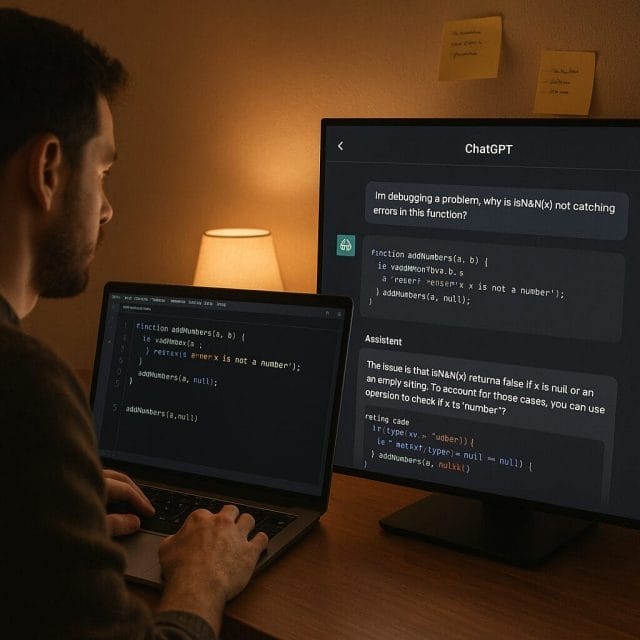
Privacy and Safety Considerations
Temporary Chat offers helpful privacy benefits compared with normal chats: it isn’t saved to your history, and it doesn’t update Memory or feed into model training. Still, it’s crucial to understand the safety retention window. Temporary chats may be held for up to 30 days for security and abuse-monitoring purposes before being deleted. This is fairly standard for many online services and helps maintain platform integrity.
Best practices:
- Don’t paste highly sensitive personal information unless strictly necessary.
- If handling regulated data (e.g., health records, financial details), ensure you have appropriate consent and safeguards in place.
- Maintain your own secure record-keeping outside ChatGPT where legally required.
Common Pitfalls—and How to Avoid Them
Forgetting It Won’t Be Saved
Because temporary chats don’t appear in your history, it’s easy to lose work if you close the tab and expect to retrieve it later. If a temporary session produces valuable content (a summary, code snippet, outline), copy it into your notes or a repository immediately.
Assuming Total Anonymity
Temporary Chat improves privacy within your account and avoids training, but it isn’t the same as complete anonymity. The 30-day safety retention means there’s a short window during which the content exists for platform security. If you need stronger guarantees, consider combining Temporary Chat with broader privacy policies and secure data-handling practices on your end.
Mixing Context with Normal Chats
If you run parallel normal and temporary sessions on the same topic, you may get slightly different answers due to context differences. That’s expected. Keep a simple routine: test in temporary mode, store outputs externally, then bring distilled insights into your main project thread when ready.
Temporary Chat vs Global Chat History Settings
Some users prefer to turn off “Chat history & training” globally in settings, which stops saving chats to history and excludes them from training altogether. Temporary Chat is a lighter, per-chat alternative that saves you from toggling a global setting when you only want an isolated interaction once in a while. Think of it as a flexible “privacy-first” mode you can enable whenever needed, without affecting your default behaviour elsewhere.
Workflow Tips
Establish a Clear Objective
Before initiating a temporary session, state your goal in the first prompt: “I want to test this function without any previous context,” or “Help me analyse this error log independently from earlier assumptions.” Clarity helps the assistant deliver more focused support.
Structure Your Inputs
Whether it’s code, research notes, or an outline, use clear sections in your prompt: context, constraints, desired output format, and any exclusions. With no prior chat history, the assistant relies entirely on what you provide in that moment—so a well-structured prompt yields better results.
Save and Share Deliberately
If you collaborate with colleagues, consider maintaining a shared document or repository where temporary output is captured. This keeps your account history clean while preserving a record for teamwork and future reference.
Conclusion: A Small Switch with Big Benefits
Temporary Chat is a simple yet powerful addition to your toolkit. It gives you a fresh start whenever you need it—ideal for coding, sensitive queries, and unbiased research—and ensures nothing is added to your history or Memory. Just remember to capture anything important before you close the session, and be mindful of the brief safety retention period.
If you find this feature useful, take a moment to try it on your next quick task or experiment. Once you get into the habit, you’ll likely wonder how you managed without it—especially when you need clean, context-free answers at speed.
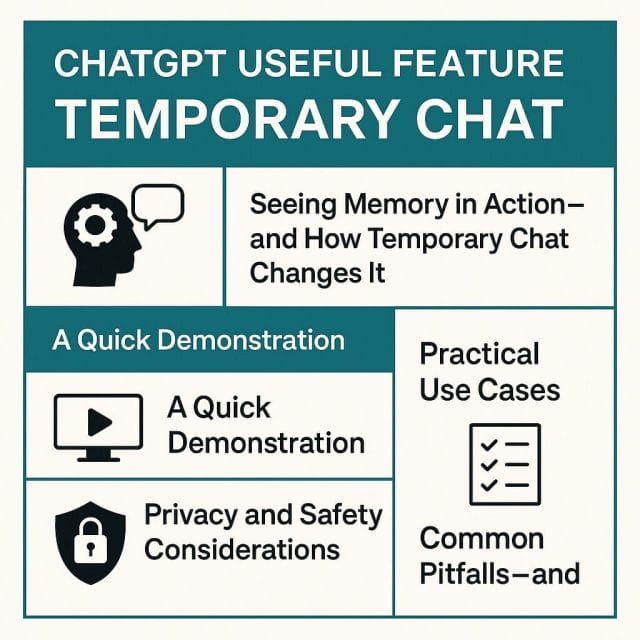

If this article helped you in any way and you want to show your appreciation, I am more than happy to receive donations through PayPal. This will help me maintain and improve this website so I can help more people out there. Thank you for your help.




